“The National Geographic Society began as a club for an elite group of academics and wealthy patrons interested in travel. On January 13, 1888, 33 explorers and scientists gathered at the Cosmos Club, a private club then located on Lafayette Square in Washington, D.C., to organize “a society for the increase and diffusion of geographical knowledge”. After preparing a constitution and a plan of organization, the National Geographic Society was incorporated two weeks later on January 27. Gardiner Greene Hubbard became its first president and his son-in-law, Alexander Graham Bell, eventually succeeded him in 1897 following his death. In 1899 Bell's son-in-law Gilbert Hovey Grosvenor was named the first full-time editor of National Geographic Magazine and served the organization for fifty-five years (1954), and members of the Grosvenor family have played important roles in the organization since.
Bell and his son-in-law, Grosvenor, devised the successful marketing notion of Society membership and the first major use of photographs to tell stories in magazines. The current Chairman of the Board of Trustees of National Geographic is Gilbert Melville Grosvenor, who received the Presidential Medal of Freedom in 2005 for the Society's leadership for Geography education. In 2004, the National Geographic Headquarters in Washington, D.C. was one of the first buildings to receive a “Green” certification from Global Green USA. The National Geographic received the prestigious Prince of Asturias Award for Communications and Humanity in October 2006 in Oviedo, Spain”. – Wikipedia
Bell and his son-in-law, Grosvenor, devised the successful marketing notion of Society membership and the first major use of photographs to tell stories in magazines. The current Chairman of the Board of Trustees of National Geographic is Gilbert Melville Grosvenor, who received the Presidential Medal of Freedom in 2005 for the Society's leadership for Geography education. In 2004, the National Geographic Headquarters in Washington, D.C. was one of the first buildings to receive a “Green” certification from Global Green USA. The National Geographic received the prestigious Prince of Asturias Award for Communications and Humanity in October 2006 in Oviedo, Spain”. – Wikipedia

Alaska, United States, 1909. Washing his films in iceberg-choked seawater was an everyday chore for photographer Oscar D. Von Engeln during the summer months he spent on a National Geographic-sponsored expedition in Alaska. (Photo by Oscar D. Von Engeln via National Geographic)
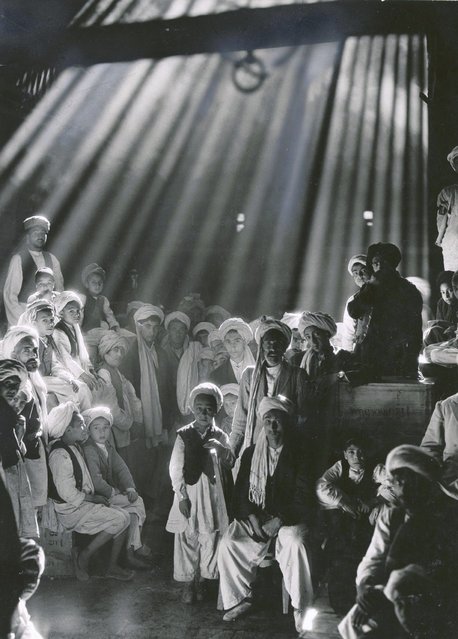
Afghanistan, 1931. In his favorite picture, legendary National Geographic photojournalist Maynard Owen Williams marveled how, in this Herat, Afghanistan, bazaar, no one blinked during the three seconds required to make the exposure. (Photo by Maynard Owen Williams via National Geographic)
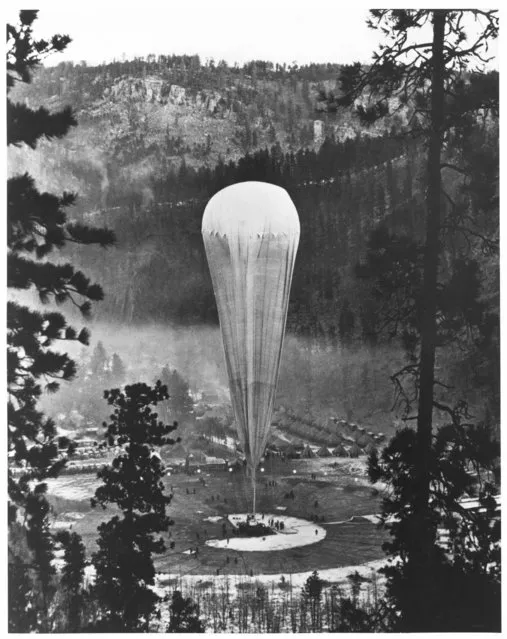
South Dakota, United States, 1935. The National Geographic-Army Air Corps stratosphere balloon Explorer II prepares to rise from the Stratobowl near Rapid City, S.D., on November 11, 1935. It carried two “aeronauts” 72,395 feet (nearly 14 miles) into the stratosphere – the highest men would go for the next 21 years. (Photo by H. Lee Wells via National Geographic)
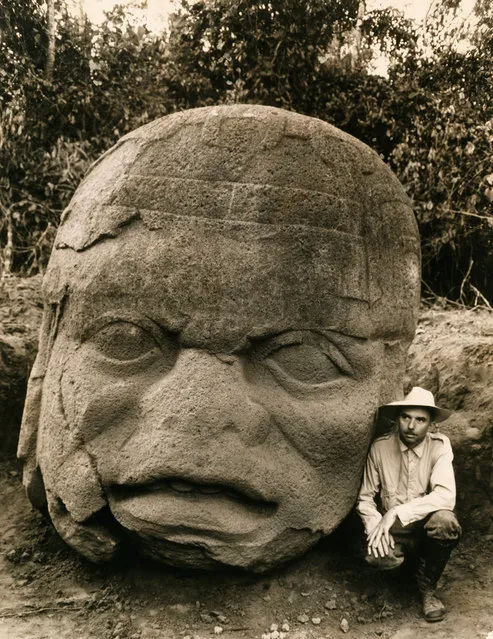
Beginning in 1938, Matthew Stirling, chief of the Smithsonian Bureau of American Ethnology, led eight National Geographic-sponsored expeditions to Tabasco and Veracruz in Mexico. He uncovered 11 colossal stone heads, evidence of the ancient Olmec civilization that had lain buried for 15 centuries. (Photo by Richard Hewitt Stewart via National Geographic)
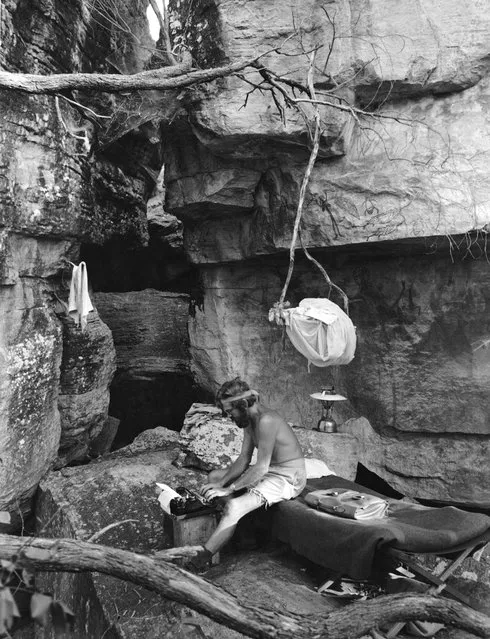
National Geographic magazine’s “Australia man,” photojournalist Howell Walker, types away in his “office” at Inyalark Hill, where he spent a week with Charles Mountford, leader of the Arnhem Land 1948 expedition. (Photo by Howell Walker via National Geographic)
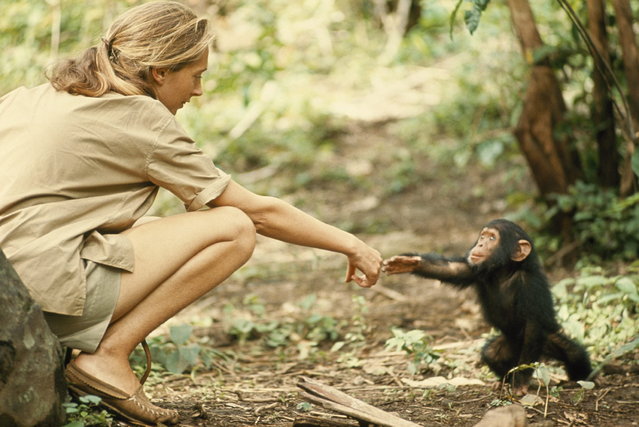
Tanzania, 1964. A touching moment between primatologist and National Geographic grantee Jane Goodall and young chimpanzee Flint at Tanzania's Gombe Stream Reserve. (Photo by Hugo van Lawick via National Geographic)
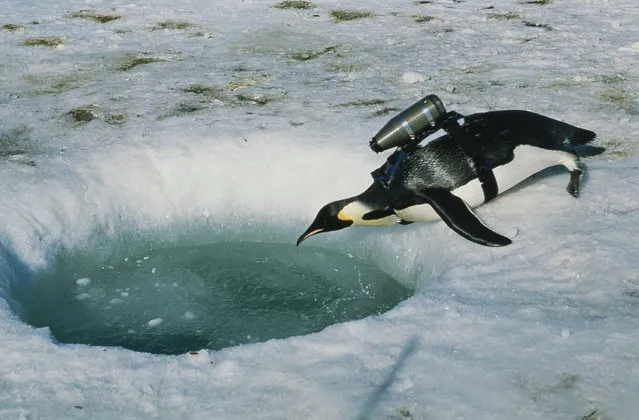
Antarctica, 2004. An emperor penguin, outfitted with a Crittercam system designed by marine biologist and National Geographic staff member Greg Marshall, becomes an unwitting cameraman for a National Geographic documentary. (Photo by Greg Marshall via National Geographic)
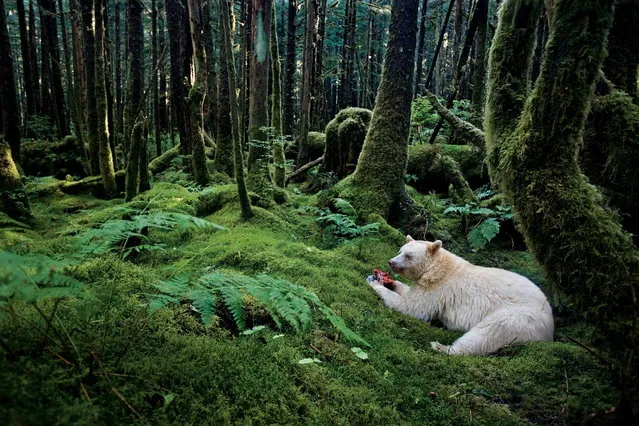
British Columbia, Canada, 2010. In a moss-draped rain forest in British Columbia, towering red cedars live a thousand years, and black bears have white coats. They are known to the local people as spirit bears. (Photo by Paul Nicklen via National Geographic)
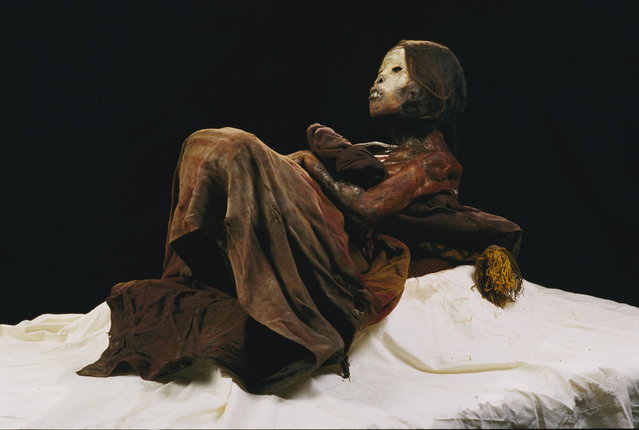
Peru. The “Ice Maiden” the 500-year-old mummy of a young Inca girl found on a Peruvian mountaintop by archaeologist and National Geographic Explorer-in-Residence Johan Reinhard. (Photo by Stephen Alvarez via National Geographic)
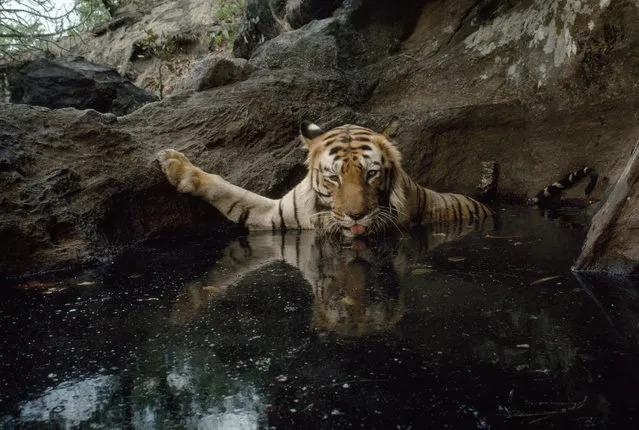
India, 1995. By setting off a camera trap, a female tiger captures her own image in Bandhavgarh National Park. (Photo by Michael Nichols via National Geographic)
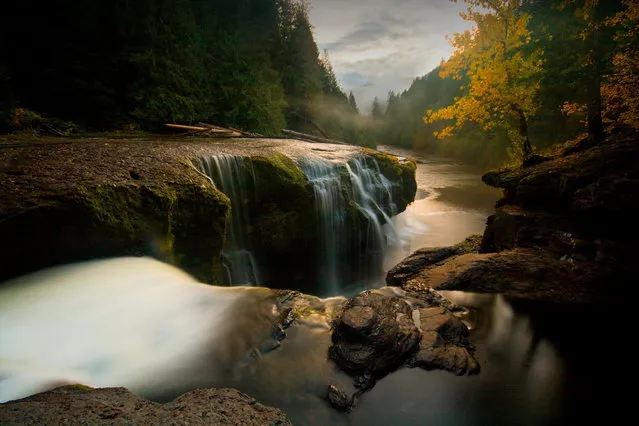
Washington State, United States, 2009. Sunset falls on Gifford Pinchot National Forest, named for the founder of the U.S. Forest Service and National Geographic Society board member. (Photo by Scottyboipdx Weber/National Geographic My Shot via National Geographic)
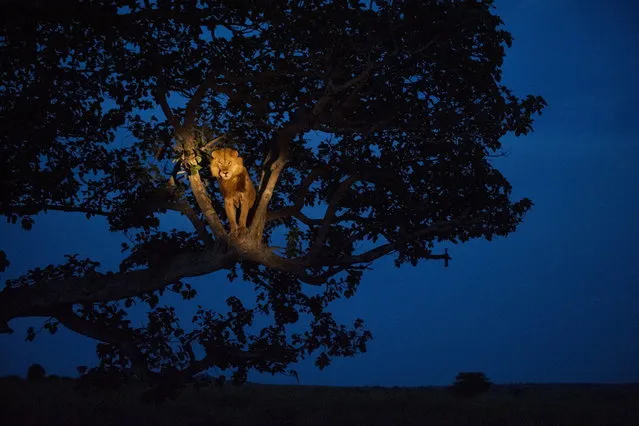
Uganda, 2007. A lion climbs a tree to sleep, in Uganda's Queen Elizabeth Park. (Photo by Joel Sartore via National Geographic)
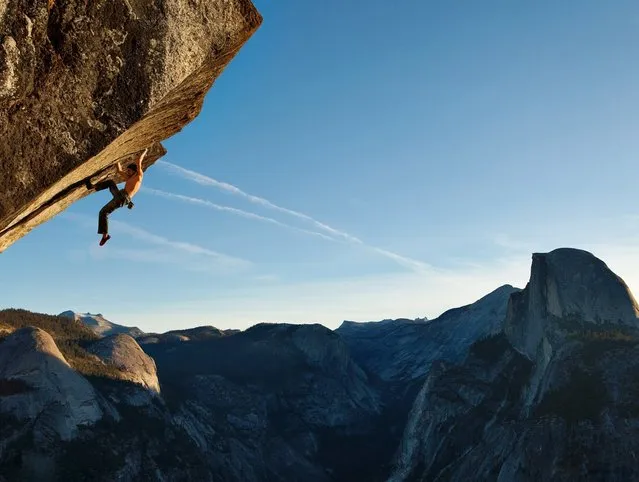
Climbing without a rope in Yosemite National Park, Dean Potter scales a route called “Heaven.” (Photo by Mike Schaefer via National Geographic)
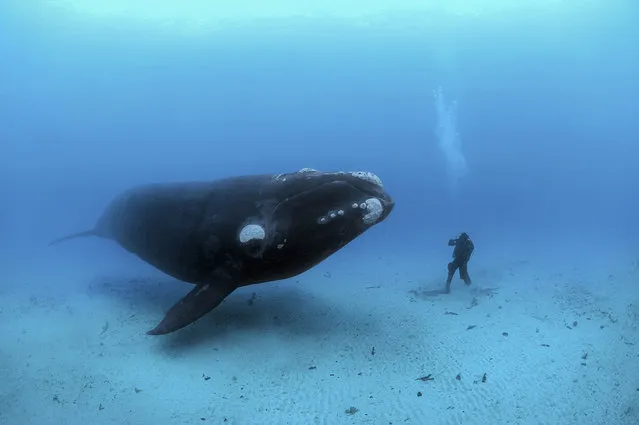
Curious creatures meet 70 feet deep off the remote Auckland Islands, 300 miles south of New Zealand. In these unfished waters, Brian Skerry photographs a diver encountering a southern right whale that may have never seen a human before. (Photo by Brian Skerry via National Geographic)
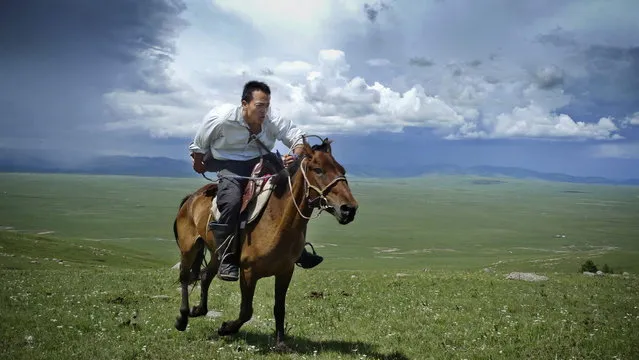
Mongolia, 2009. Research scientist and National Geographic Emerging Explorer Albert Lin gallops across the steppes of northern Mongolia as he searches for Genghis Khan's tomb and other archaeological sites. (Photo by Mike Hennig via National Geographic)
16 Jan 2013 09:59:00,
post received
0 comments
